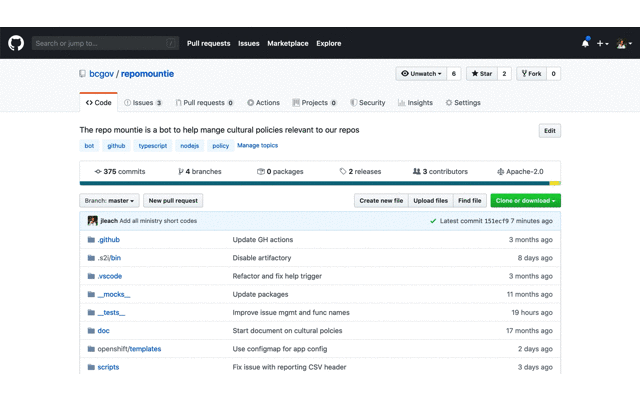Verifiable Credential Identity Provider for OpenID Connect.
See here for background into how this integration is defined.
For configuration instructions, refer to the configuration guide.
Make sure to read the best practices to be used when protecting a web application using vc-authn-oidc.
If you are upgrading from a previous release, take a look at the migration guide.
- A bash-compatible shell such as Git Bash
- Docker
- Ngrok token (optional, required for local development)
Each developer must apply for an Ngrok token here. Then place the token into the .env-dev file within the docker directory.
NGROK_AUTHTOKEN=<your token here>
Open a shell in the docker folder and run the following commands:
./manage build: this command will build the controller image. This step is required the first time the project is run, and when dependencies in change in the requirements file(s)../manage start: this will start the project. Follow the script prompts to select the appropriate runtime options: they will be saved in anenvfile for the next execution.- To reset everything (including removing container data and selected options in the
envfile) execute./manage rm.
A list of all available commands is visible by executing ./manage -h.
The project is set-up to run without needing any external dependencies by default, using a standalone agent in read-only that will target the ledgers specified in ledgers.yaml.
To use VC-AuthN for development and/or demo purposes, a pre-configured demo app is provided in the demo/vue folder. To start it, execute docker compose up from within the demo/vue folder.
In order to use the VC OIDC authentication, a couple of extra steps are required:
- A proof-request configuration needs to be registered with VC-AuthN. To do so, the following command can be used to post a configuration requesting a BC Wallet Showcase Person credential:
curl -X 'POST' \
'http://localhost:5000/ver_configs/' \
-H 'accept: application/json' \
-H 'Content-Type: application/json' \
-d '{
"ver_config_id": "showcase-person",
"subject_identifier": "",
"generate_consistent_identifier": true,
"proof_request": {
"name": "BC Wallet Showcase Person",
"version": "1.0",
"requested_attributes": [
{
"names": ["given_names", "family_name", "country"],
"restrictions": [
{
"schema_name": "Person",
"issuer_did": "L6ASjmDDbDH7yPL1t2yFj9"
},
{
"schema_name": "Person",
"issuer_did": "QEquAHkM35w4XVT3Ku5yat"
},
{
"schema_name": "Person",
"issuer_did": "M6dhuFj5UwbhWkSLmvYSPc"
}
]
}
],
"requested_predicates": []
}
}'- The demo application is configured to use Keycloak as AIM system. To register keycloak as a client for VC-AuthN, execute the following command in a shell:
curl -X 'POST' \
'http://localhost:5000/clients/' \
-H 'accept: application/json' \
-H 'Content-Type: application/json' \
-d '{
"client_id": "keycloak",
"client_name": "keycloak",
"client_secret": "**********",
"response_types": [
"code",
"id_token",
"token"
],
"token_endpoint_auth_method": "client_secret_basic",
"redirect_uris": [
"http://localhost:8880/auth/realms/vc-authn/broker/vc-authn/endpoint"
]
}'- Lastly, obtain a Person Credential from the BC Wallet Showcase by completing the lawyer demo.
After all these steps have been completed, you should be able to authenticate with the demo application using the "Verified Credential Access" option.
To connect a debugger to the vc-authn controller service, start the project using DEBUGGER=true ./manage start and then launch the debugger, it should connect automatically to the container.
This is a sample debugger launch configuration for VSCode that can be used by adding it to launch.json, it assumes a .venv folder containing the virtual environment was created in the repository root:
{
"version": "0.1.1",
"configurations": [
{
"name": "Python: Debug VC-AuthN Controller",
"type": "python",
"request": "attach",
"port": 5678,
"host": "localhost",
"pathMappings": [
{
"localRoot": "${workspaceFolder}/oidc-controller",
"remoteRoot": "/app"
},
{
"localRoot": "${workspaceFolder}/.venv/Lib/site-packages",
"remoteRoot": "/usr/local/lib/python3.11/site-packages"
}
],
"justMyCode": false
}
]
}





